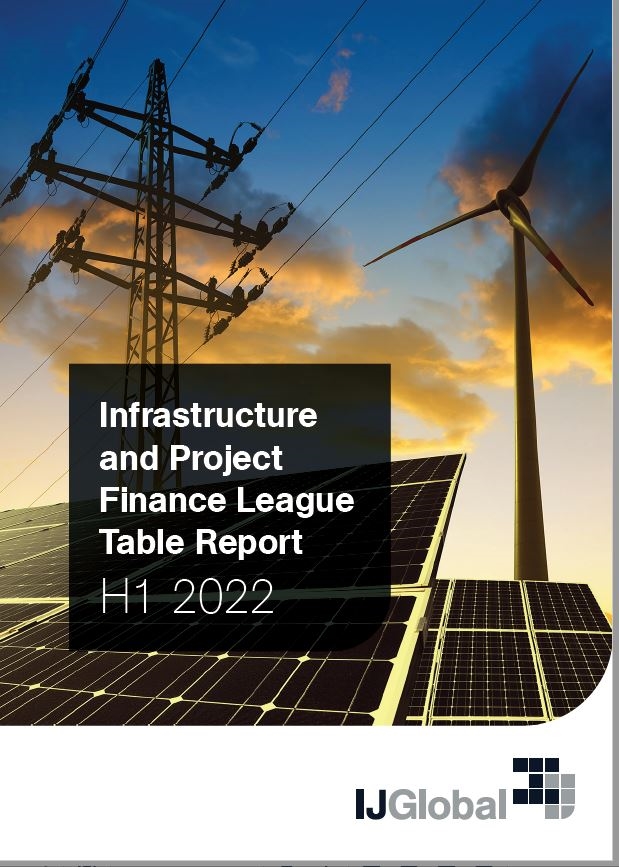IJGlobal League Tables – a significant dip
The first half of 2022 has logged a significant dip in global infrastructure finance activity with a slump in transaction numbers, but a slight uptick in value. However – overall – data show a marked decline in activity on the preceding 2 half-year periods.
Data published today (subject to change as more information becomes available) show that H1 2022 activity levels compare poorly to the corresponding half-year in 2021, logging $670.55 billion of closes and representing a drop of 17.6% based on deal value. As to deal number, this is down by 17.8% when held against H1 2021, 1,700 closes compared to 1,397.
The access the report (apologies, it takes 2 clicks) CLICK HERE…
The coronavirus pandemic continues to shoulder a significant portion of the blame for poor activity, but this is compounded by geopolitical issues as the Ukraine conflict continues to rage and inflation impacts markets.

The feel-good factor is also bolstered by project finance recording something of a resurgence in H1 2022 with financial closes on 19.39% more transactions than the corresponding half from the year before. The largest of these closes were PF deals associated with major acquisitions in, and most of these fell in Q1.
Commercial lending continued to decline at around 24% less than H1 2021, but of those banks the Japanese continued to dominate with MUFG and SMBC dominating the board. ING Bank comes in its favoured slot of nestling behind market leaders and it is joined by Santander which continues its strong performance.
While deals that closed in the first half were generally higher in terms of average value, deal volume was down when compared to H1 2021. Europe is singled out as a key region due to previous high performance with it slumping by 35% by deal value and 22% by number. The average size of European transactions tanked from $474 million to $399 million.
Other regions remained reasonably stable throughout H1 2022 though MENA registered a 50% drop in value, but this is less significant than Europe given market size. And – in its defence – a few high-profile deals did close over the period.
Infrastructure finance across Latin America increased by 27% to $53 billion with the largest deals predominantly being in the telecoms and transport sectors. Sticking with a sectoral theme, infra finance in H1 2022 remained stable for telecoms and mining, however all other sectors dipped in both value and activity. Interestingly, O&G deals slumped by 49% in value.
Capital markets continued to perform poorly when compared to recent market highs of H1 2021 and H1 2020, which is largely put down to repercussions from the conflict in Ukraine. Overall the first half of this year was the least active period since H2 2019 with green and sustainability-linked bonds reaching their peak half-year values for the last 5 years, standing at $46.1 billion globally.
Global infrastructure and energy M&A activity in H1 2022 amounted to $211 billion – some 6.5% higher than H1 2021 – while logging a 7.7% lower deal count, 581 compared to 626 in the corresponding half.
Company acquisitions dominated activity at $108.92 billion, slightly higher than asset acquisitions which came in at $98.5 billion. Company acquisitions have twice the average deal value than asset acquisitions.
North America is the most active region for M&A activity with $63.2 billion of deals to close in H1 2022, while Europe was the most active region by volume with 263 transactions to close over the period.
Contrary to received wisdom, O&G was the single most active M&A sector with $48.8 billion of deal closes in H1, while the renewable energy sector was most active by deal volume with 290 closes.
Request a Demo
Interested in IJGlobal? Request a demo to discuss a trial with a member of our team. Talk to the team to explore the value of our asset and transaction databases, our market-leading news, league tables and much more.

